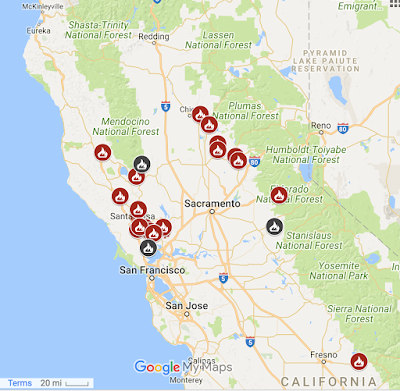42° 07' 06"N
70° 56' 47"W
Learn more about Lat/Long (including how to look them up by address)
Also, compare today's coordinates to those of other recent EarthView outings, near and far! Next year, Frolio student's will be asked to compare the coordinates of this gym and the gym in the new Abington Middle School.
The EarthView team is very pleased to return to Frolio, which we have visited every year since 2010. We always find students who have been actively engaged in learning geography, which we can tell because of the good questions they ask during our visits. We enjoy giving students a different way to look at the places and concepts they have been studying in their excellent geography classes throughout the year.
This will be the last time EarthView will be in Frolio's charming all-wood gymnasium, as a new school is under construction. Although we are happy that Frolio's teachers and students will have upgraded facilities, we will miss this gym, whose architecture is typical of public projects built by the
Work Progress Administration in the 1930s.
During today's visit, some classes learned about another kind of public-works project: dams.
 |
| Grand Ethiopian Renaissance Dam under construction in 2015 |
Specifically, we showed the location of this dam, which is under construction in Ethiopia. The Grand Ethiopian Renaissance Dam will be enormous, creating a reservoir twice as large as
Lake Meade, which is the reservoir behind the Hoover Dam in Nevada and Arizona. The purpose of the Ethiopian dam will be to provide renewable electricity in Ethiopia. It is located on the Blue Nile, a major tributary of the Nile.
With a capacity of 6,000 megawatts, it could provide electricity to about 9,000,000 households in the United States. Ethiopia has 94,000,000 people in about 20,000,000 households. With its lower level of electricity consumption, this dam will provide enough electricity to serve all of that county's household needs.
Although this is very good news for Ethiopian households, dams usually have both positive and negative effects. In the case of this dam, it is one of several problems for the Nile Basin, and especially for people and crops in Egypt. This is combined with the rise of sea level at the mouth of the Nile and other problems that some scientists call the
Vanishing of the Nile.
 |
| EarthView team member Kevin Bean carting EarthView away from the American Association of Geographers meeting in Boston. The AAG recently changed its name from the Association of American Geographers. What is the difference? |
This year's Frolio visit is in the middle of the
annual meeting of the
American Association of Geographers. EarthView has been a popular attraction at the conference, which has brought thousands of professional geographers to the Hynes Convention Center in Boston, along with publishers and technology companies that
employ and serve geographers.
On Thursday and Saturday, EarthView has a spot at the entrance to the the HUUUUGE exhibit hall, next to interactive displays from Google and esri, each of which is a major provider of software for Geographic Information Systems and digital mapping.
Lagniappe: Farewell to Frolio
As mentioned above, the students and teachers of Frolio will soon be in more modern, spacious facilities, and we are glad for them. Like many of them, though, the EarthView team will miss this charming building, which began as Abington High School 80 years ago.
It was built during the Great Depression, one of thousands of projects around the United States that were funded by the Federal government under the leadership of President Franklin Roosevelt. The idea was to invest money -- even to borrow money -- in projects that would be good investments and would provide jobs for those who wanted to work but could not find employment.
The building later served as a middle school, named for a beloved teacher and principal. The EarthView team took a few photos today to remember this building, and we look forward to many more years with the Abington geographers in their new space.
 |
| Architectural details |
 |
| Charles Frolio's portrait, in the main entrance |
 |
| Memorial for Charles Frolio |
 |
| Details of the Federal Project that built the school |
 |
| The local committee that oversaw the project; today such a committee would almost certainly include both men and women. A woman did serve as the committee secretary, and her name is what is called an apternym, because it is apt for the job. |
Our favorite part of the building, of course, is the gym itself. We visit a lot of gyms, and this is among the most charming. It has subtle architectural details of its own, and we love the wooden bleachers. It will continue to serve as a venue for community games.
 |
| EarthView at Frolio for the last time. |































